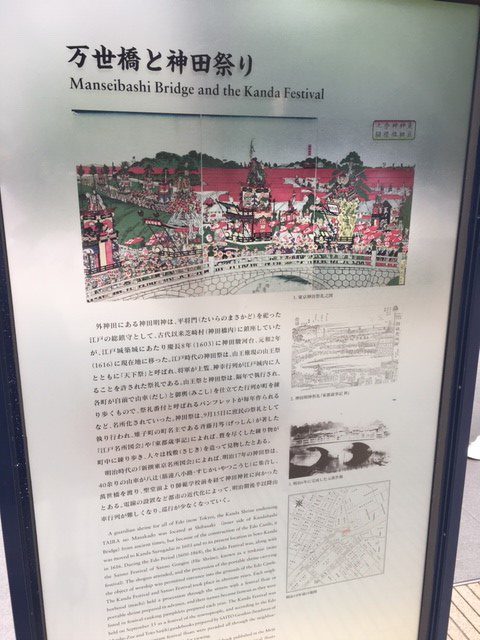Blog
2019.10.02
Kanda
What is beauty? A Comparison of Ukiyo-e and Modern Paintings in Kanda Myōjin Shrine
There is a sub-genre of Ukiyo-e called Bijin-ga, which translates to “pictures of beautiful women”. Ukiyo-e itself is an art which has garnered much attention from western fans and features a variety of subject matters, including Yakusha-e, which portray popular kabuki actors of the time, and Meisho-e, which depict famous sightseeing destinations. The Bijin-ga, however, take up a more universal theme which has been constantly explored throughout history in many cultures. This theme is beauty.
But how exactly do the standards of beauty from Ukiyo-e of the past differ from those now? And what do they have in common?
Today we’d like to talk about both Ukiyo-e and the “Bijin-ga from Kanou Seisaku and the Kanda Myōjin Collection” Exhibition being held at Kanda Myōjin Shrine, which we mentioned in our first blog about Kanda.

A Bijin-ga by Kitagawa Utamaro in Kanda Myōjin
What is Ukiyo-e?
Ukiyo-e wood-block paintings first grew to popularity among the common people of the Edo period. Ukiyo-e prints were not intended for the privileged upper classes or to serve as a mere decoration to be hung around the walls of a lord’s castle; they were in fact paintings with great commercial and entertainment value for all. They did not seek to cover lofty and grand subjects such as religion or history, but were instead drawings depicting the everyday life of ordinary people. Although we’ve used words like “drawing” and “painting” here, Ukiyo-e were actually made using wood-block prints, which meant that reproduction of works was easily possible. One single Ukiyo-e print went for about the same price as a bowl of soba noodles, so it easily became a favoured recreational activity of the masses.
In sharp contrast to their reasonable cost at the time, Ukiyo-e paintings are currently treated as valuable historical primary sources, and as such their cost is substantially higher. Ukiyo-e afford us clues as to how the people of the Edo period lived, and they enable us to speculate about places which no longer exist. Due to them being primarily a commercial product, they were made to the liking of people of the time in order to sell well. As such, they can teach us a lot about the preferences and tastes of the people of the past.

A Ukiyo-e print depicting the Kanda Festival
Kanda Myōjin and Ukiyo-e
Unsurprisingly, one of the favorite subjects of Ukiyo-e paintings was the great Kanda Festival. There were doubtless many people back then who wanted to capture in picture form the vigor of the festival on a clear sunny day. These brilliant and flashy paintings, which employed, in particular, a great deal of vermillion and scarlet colors, have caught the eyes of many people today as well.
The “Bijin-ga from the Kanou Seisaku and Kanda Myōjin Collection” Exhibition, which we mentioned earlier, is currently being held at Kanda Myōjin Shrine. On display there you can find the works of multiple great Ukiyo-e artists of the Edo period who are especially renowned for their Bijin-ga, such as Utagawa Toyokuni the 3rd and Kitagawa Utamaro, alongside the work of the modern playwright and artist Kanou Seisaku. The paintings on exhibit there are brimming with so much individuality that they will no doubt be a source of fevered discussion among admirers of the genre. For fans of Kanou Seisaku’s work, this is not an exhibit to be missed!

Ukiyo-e also made its way to Europe in 1867 during the Paris Exposition and drew a lot of attention as part of the Japonisme boom of the 19th century. It was not unusual to find western rooms decorated with Ukiyo-e paintings, and there are also many famous anecdotes regarding how western painters attempted to integrate Ukiyo-e’s unique lack of three-dimensional perspective into their own works.
Pondering over the subtle differences in our conceptions of beauty in the past and present, while viewing incredible Ukiyo-e paintings in the sacred, historical site of Kanda Myōjin Shrine… Perhaps only Kanda, a neighborhood at the crossroads of tradition and modernity, can offer you this kind of experience.
You can find information about the exhibition below:
Date: September 14th to October 14th
Time: 9 am to 4 pm
Place: Kanda Myōjin Shrine Reference Library 2nd Floor, Exhibition Room
*There is a permanent exhibition on the 3rd floor which you can also view
Tickets: Kanda Myōjin Bunka Koryukan, 1st Floor
Cost: 300 yen for Adults, 200 yen for Students, Entry free for children under 13.
Similar Posts
[jetpack-related-posts]



Leave a Reply